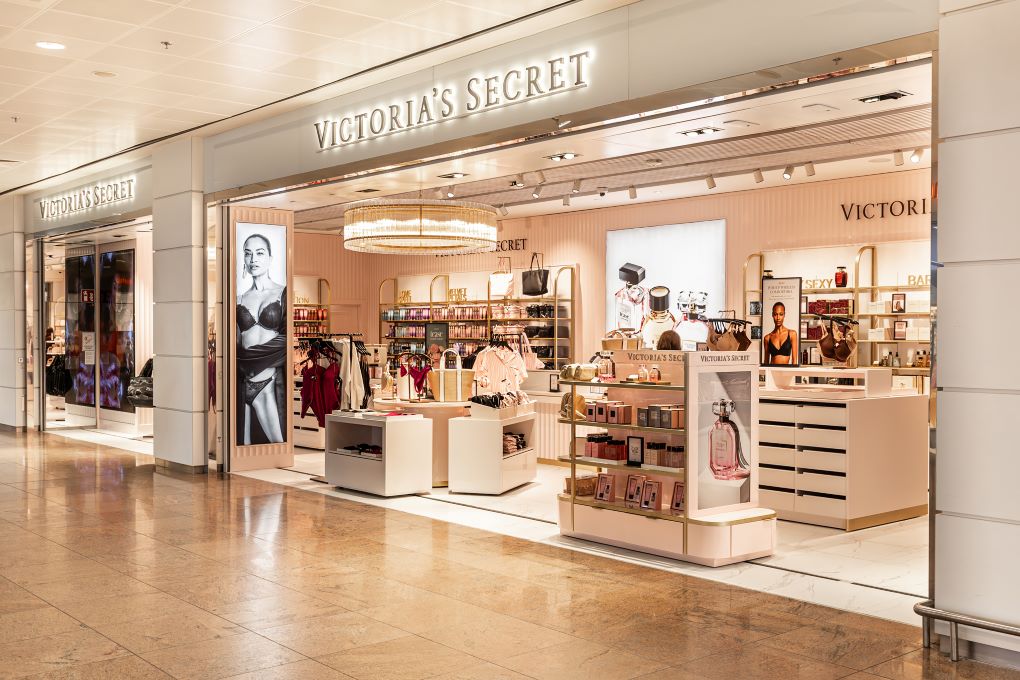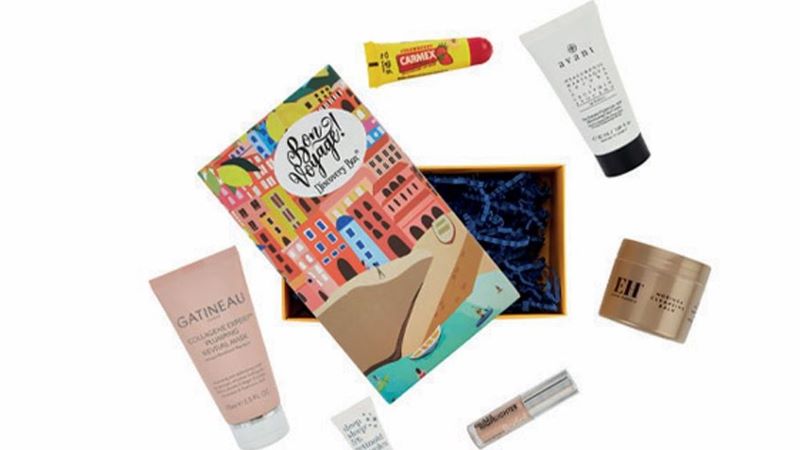La Mer is not just a brand, it’s a phenomenon. Created by NASA physicist Max Huber in 1965, and acquired by the Estée Lauder Cos in 1994, everything about it (except the price points) embodies the ‘less is more’ philosophy. Women the world over clamour just to be put on its waiting lists. Beauty editors love it. Retailers request it. Yet it does no global advertising and virtually no promotional activity, relying solely on word of mouth and PR/editorial coverage. Conventional push or pull tactics? It just doesn’t need them. As for gwps – perish the thought.
In terms of distribution, La Mer has brought new meaning to the term selective. And if it’s proved difficult to track down on the domestic market, in travel retail it’s been well nigh impossible. The brand made its debut in the channel with DFS via its Waikiki Galleria in 1997, which remained its sole tax free door until 2002. Since then, there have been openings in Singapore Changi terminals one and two with the Nuance Group; at Seoul Incheon in conjunction with Lotte; at New York JFK T1 with International Shoppes; and at Vancouver International, again with Nuance. Most recently, in August this year, it was rolled out into Taipei T2, in conjunction with TASA Meng, and Tokyo Narita T1 with JATCO.
Looking forward, La Mer is scheduled to enter Dubai Duty Free and London Heathrow T3 and T4 at some point, although Lauder describes these as “open projects” with no firm opening dates as yet. But the brand will definitely enter DFS Guam this autumn, in addition to Los Angeles Tom Bradley International terminal, and Tokyo Narita T2 sometime next year.
So, do these openings herald a new distribution era for La Mer? Is it set to become as familiar a sight in travel retail as the rest of the Lauder group’s brands? Might it even become available in other travel retail channels, such as inflight? No, no and no again, according to executive director of marketing for Aramis & Designer Fragrances, Origins, Stila, Bobbi Brown and La Mer travel retailing worldwide Israel Assa.
“The scarcity and tightly-controlled distribution of La Mer on a global basis has played a key role in building the brand’s success,” he explains. “When people do come across it, they make sure that they buy it, just because they don’t encounter it that often. It has a very limited distribution strategy in the affiliates on both the US domestic and international markets. The strategy so far has been to focus on prestige, flagship doors where we know for sure that the consumer base is relevant for a high-end offering like La Mer, and that is what we are now looking to emulate with our key partners in travel retail. By La Mer’s standards, it might look like we’re opening a lot of doors in a short period of time, but compared with brands such as Estée Lauder, Lancôme and Christian Dior, which are present in well over 1,000 doors, we’re not. We are still in a very limited distribution mode and that’s how we’d like to keep it. There will be a slow but sure roll-out over the next two to three fiscal periods. But our masterplan is never to exceed approximately 25 to 30 doors.”
ON THE RECORD: “THE SCARCITY AND TIGHTLY-CONTROLLED DISTRIBUTION OF LA MER ON A GLOBAL BASIS HAS PLAYED A KEY ROLE IN BUILDING THE BRAND’S SUCCESS. WHEN PEOPLE DO COME ACROSS IT, THEY MAKE SURE THAT THEY BUY IT, JUST BECAUSE THEY DON’T ENCOUNTER IT THAT OFTEN.” – ISRAEL ASSA
Nor is the company overly fixated by the amount of space it is allocated within these super-select doors. “The key for us is location,” emphasises Assa. “La Mer is not one of those developing brands that requires a tremendous amount of space, or even a shop-in-shop concept. Rather our goal is to find a space that is appropriate for the type of business that we do. But La Mer does provide a lot of ‘travel-tainment’ and theatre to the retailer. Our data shows that we bring customers into a store, and we increase footfall and penetration. Therefore, we do request a prime location in the store.”
He continues: “As for the nature of our presence [counters, corner installations and so on], that depends on the store. A shop that is being renovated offers a different set of opportunities to an existing one that is not. But we handle each opportunity individually on a door-by-door basis. It’s account by account and retail partner by retail partner. Ultimately it’s all about finding the right location for the brand in the right flagship airport/downtown door.”
One thing that is not negotiable however, is the presence of La Mer’s signature salt-water fish tank (sea kelp is one of the formula’s key ingredients). “Every single door must have a fish tank,” confirms Assa. “We don’t ask retailers for the biggest space in the store; nor do we continuously compare the amount of space we have with others, but we do insist on that. It is a key element for us – and such a huge draw. Obviously it represents a maintenance cost, but we are more than willing to support that, because it’s unique to La Mer. It is key to the philosophy of the brand – and key to increasing penetration in-store. And at the end of the day that’s what it’s all about – getting more people through the doors and more people buying La Mer.”
ON THE RECORD: “EVERY SINGLE DOOR MUST HAVE A FISH TANK…IT’S KEY TO THE PHILOSOPHY OF THE BRAND – AND KEY TO INCREASING PENETRATION IN-STORE. AND AT THE END OF THE DAY, THAT’S WHAT IT’S ALL ABOUT – GETTING MORE PEOPLE THROUGH THE DOORS AND MORE PEOPLE BUYING LA MER.” – ISRAEL ASSA
Even the brand’s product range is in keeping with its minimalist ethos. “It is amazing how productive La Mer is with less than 20 skus,” comments Assa. “It is one of the most prolific brands in-store if you look at sales on a per sku per square metre basis. It is one of the reasons why DFS decided to allocate a lot more space to us in its Hawaii Galleria store. Because quite simply, the more stock we are able to put in, the more we sell.”
New this year is The Concentrate, which has already made its debut in the US and is now being rolled out internationally. It has been specifically designed to help renew, rebuild and repair fragile, pre- and post-trauma skin on both the face and the body. It is claimed to complement the skin’s own natural healing process; diminish the appearance of scars and burns; and soothe irritation and diminish redness caused by chemical peels, microdermabrasion, electrolysis and laser treatments.
“We are expecting a lot from The Concentrate,” admits Assa. “Our core products are the crème, the eye balm and the face serum – what we call the trio. That is where we generate the majority of sales and they are the key to driving La Mer at retail everywhere. Recently we’ve launched other items, such as a lip balm and a hand treatment, which are niche in terms of the overall mix, but fantastic in terms of service. We anticipate that The Concentrate will be a lot bigger than those.”
And – sales apart – service is the one area where La Mer doesn’t consider that less is more. “We firmly believe that one of the main reasons we perform so well is that the level of service our beauty consultants give is the best, bar none,” Assa declares.
“We spend a lot of time and money making sure our consultants are the best on the floor, and that every time we launch a product they are on top of what the benefits are. When you’re asking customers to pay so much money for a single sku, that level of service has got to be a given. After store location, it’s our number one priority.”
ON THE RECORD: “WE FIRMLY BELIEVE THAT ONE OF THE MAIN REASONS WE PERFORM SO WELL IS THAT THE LEVEL OF SERVICE OUR BEAUTY CONSULTANTS GIVE IS THE BEST, BAR NONE…AFTER STORE LOCATION, IT’S OUR NUMBER ONE PRIORITY.” – ISRAEL ASSA
And it is paying dividends. La Mer’s strategy of quality over quantity has created a loyal army of devotees who spend with gay abandon once they finally track down what they’re looking for. That all-too-human frailty of wanting most what we can’t easily have is proving profitable indeed. And as the super-premium skincare sector per se goes from strength to strength in travel retail, prospects for La Mer are unlikely to dim.
For once, size doesn’t matter – or at least not in the usual way. La Mer is determined to make sure that small stays beautiful for a long time to come.




